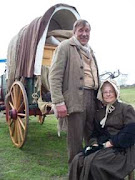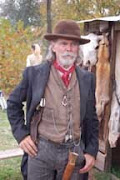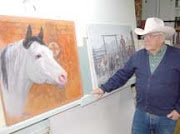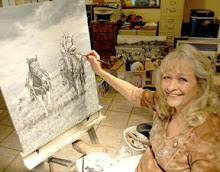
Farmers and ranchers in Palo Pinto County, in north central Texas, were faced with a problem – destruction of crops and land by feral hogs.
The solution? Get county commissioners to pay for a trapper – and that’s what they did.
Ronald W. “Trapper” Rhoades started in the county July 1. But he’s no stranger to Palo Pinto County. He was the county’s trapper from 1985-92. From there he went to Erath County where over that seven-year period he trapped around 7,000 hogs. Then he was trouble shooter for a feral hog program until he started back in Palo Pinto County.
The program falls under the USDA Wildlife Services on the federal side and the Texas Agrilife Extension Service of Texas A&M on the state side. It costs the county $2,200 per month, the fees going partially to the trapper’s salary and the rest for supplies, materials and transportation.
But feral hogs are a relatively new problem compared to when the program began in 1915 when wolves were killing livestock.
“There’s no wolves left in Texas,” says Rhoades. "Bobcats, mountain lions live here, they’ve always been here.”
He says Palo Pinto County with its rocks, hills and water is ideal for the big cats.
But the problem now is feral hogs.
“Just like this county, there weren’t any hogs when I started,” notes Rhoades. “Like the state, they’re just all over.”
And they’re doing plenty of damage – to crops, fences and wildlife.
“Vehicle damage – there’s more vehicle fatalities from people hitting hogs.”
He says most of the hogs are domestic.
“It takes three generations to convert back to an old-world hog,” Rhoades explains.
“A lot of hogs with big, long noses with characteristics of Russian boars, it’s just not there,” he says with a shake of his head. They, too, are domestic in origin. And there is some danger for people.
“In certain cases, if a sow has a litter, they will attack you,” he warns. “Lots of deer hunters are cut by hogs.”
In addition, coyotes will also be trapped.
Jan Loven, a district supervisor, explained the coyote problem.
“Palo Pinto County has always had a high coyote population,” Loven says. “You’re not alone. There’s probably nowhere that coyotes kill more than the Metroplex – they’re killing every night.”
He cites reasons for the increase in the coyote population. The first is the use of a chemical poison - Compound 1080.
“When I first came, we had Compound 1080, designed to kill certain species,” he notes. “We can’t use it any more.”
Loven explains that environmental groups oppose the use despite proof that it would not kill other animals. But ranchers started using it.
“Ranchers got this and increased the dose 10 times and killed everything in the pasture,” he explains. “EPA banned it, we lost that control tool.
“Another is the difference in land usage – a lot of properties are not raising anything anymore,” he says.
Loven adds that because there is less agricultural use, coyotes now have more places to live and breed.
Finally, development.
“We have a whole lot of suburban development – you call them ranchettes, we call them smorgasbords.”
He explains that coyotes can come in at night, take ducks, chickens and other small animals before moving on to another home.
“That’s been going on for 15 years.”
“Another thing we have more of is rabies,” says Rhoades. “When the fur market was healthy, we didn’t have the rabies we have now in Texas."





